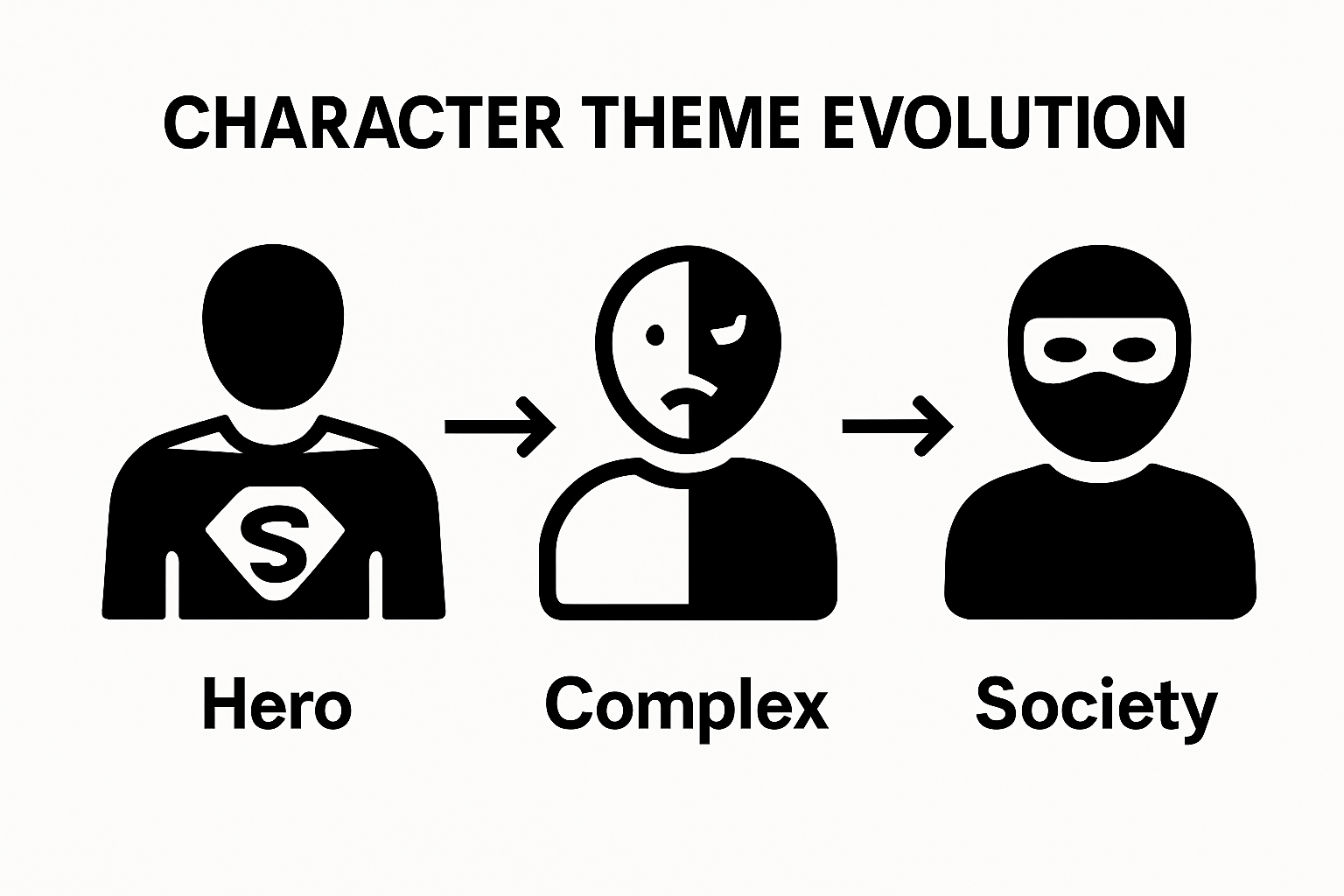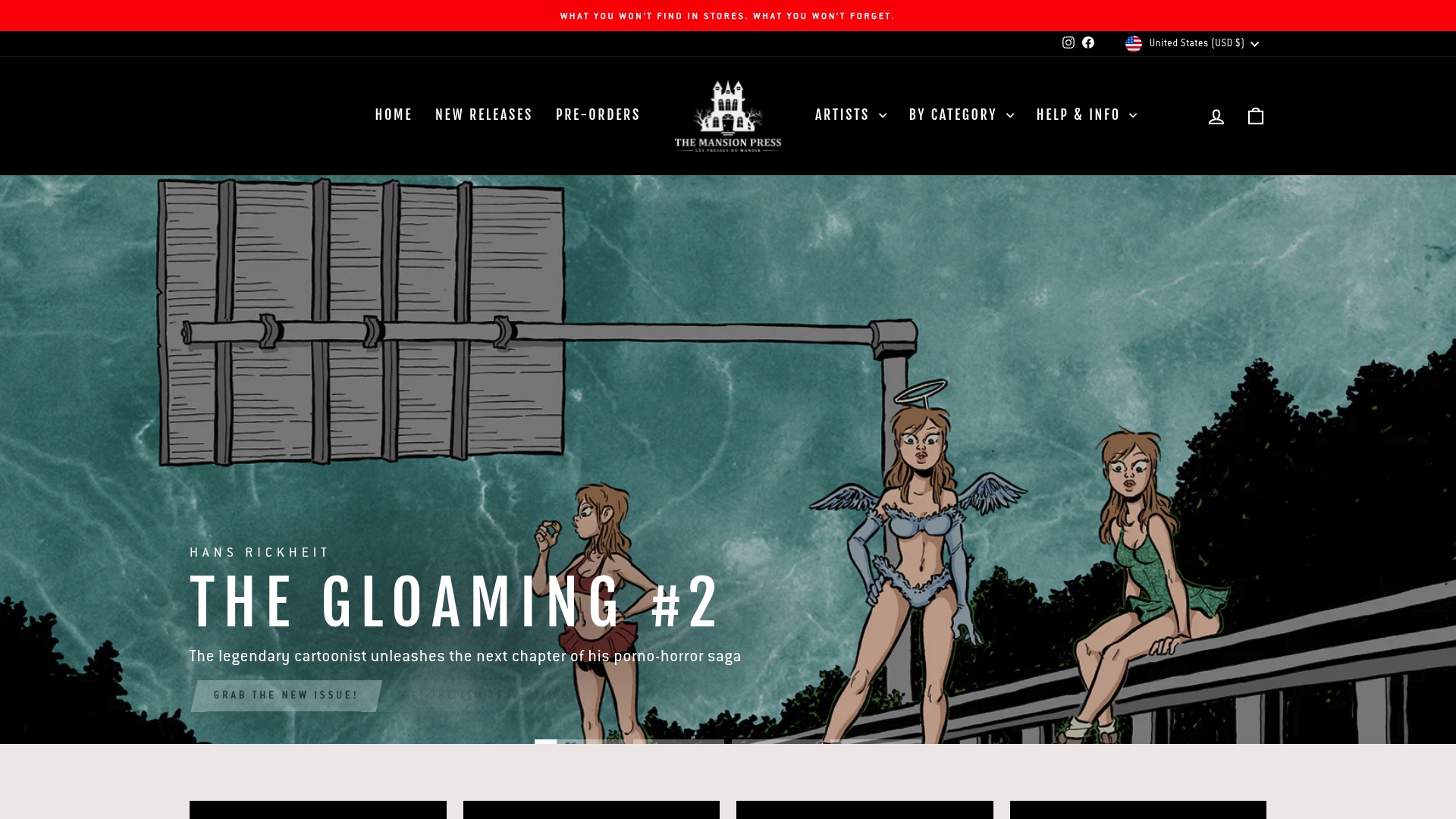Understanding Exploring Dark Comics Themes for Art Lovers
Dark comics have changed the face of storytelling in ways most readers never see coming. The Dark Age of Comics began in 1986 and pushed the medium far beyond simple superhero tales, thrusting it into rich psychological territory. You might think these stories are just for shock value or edge, but what surprises most people is how they became a lens for exploring trauma, moral gray areas, and real-world social problems. The real power is not just in the darkness itself but in what it reveals about us.
Table of Contents
- What Are Dark Comics Themes and Their Origins?
- The Importance of Dark Themes in Storytelling
- How Dark Comics Reflect Social Issues and Human Emotions
- Key Elements and Techniques in Dark Comics
- Exploring Notable Works and Their Cultural Impact
Quick Summary
| Takeaway | Explanation |
|---|---|
| Dark comics explore psychological complexity | They depict characters with multifaceted identities facing internal conflicts, challenging traditional good versus evil narratives. |
| Dark themes foster emotional resilience | Engaging with complex narratives allows readers to process trauma and develop empathy towards diverse human experiences. |
| Visual storytelling enhances emotional depth | Artists use unique visual techniques to convey intricate emotional journeys, transcending linguistic and cultural barriers. |
| Dark comics critique societal norms | These narratives expose systemic inequalities and provoke critical dialogue about uncomfortable realities, appealing for societal reflection. |
What Are Dark Comics Themes and Their Origins?
Dark comics represent a profound artistic movement that transforms traditional storytelling by exploring complex psychological landscapes and challenging societal norms. These narratives go beyond conventional superhero narratives, delving into nuanced human experiences that challenge readers’ perceptions and emotional boundaries.
Psychological Complexity and Moral Ambiguity
At the core of dark comics are themes that deconstruct traditional heroic archetypes. These comics examine characters not as straightforward good or evil entities, but as multifaceted individuals wrestling with internal conflicts. Research from the University of Chicago reveals that characters like Batman’s Two-Face symbolize the intricate psychological terrain where moral boundaries blur.
Key characteristics of dark comic themes include:
- Exploration of psychological trauma
- Questioning traditional moral frameworks
- Representation of societal marginalization
- Challenging heroic stereotypes
The origins of dark comics can be traced to a significant cultural transformation in the mid-1980s. The Dark Age of Comics, emerging around 1986, marked a revolutionary period where comics transitioned from juvenile entertainment to sophisticated narrative art forms. Groundbreaking works like Alan Moore’s ‘Watchmen’ and Frank Miller’s ‘Batman: The Dark Knight Returns’ pioneered this movement.
Historical and Cultural Context
Dark comics emerged as a response to broader societal shifts. During the Cold War era, comics began reflecting more complex global anxieties, moving beyond simplistic good versus evil narratives. Scholarly research indicates that these comics became platforms for exploring profound human experiences, including political disillusionment, psychological complexity, and systemic critique.
Artists in this genre deliberately subvert traditional storytelling, using graphic novels and comic narratives to challenge readers’ preconceived notions about heroism, justice, and human nature. By presenting morally ambiguous characters and intricate storylines, dark comics invite audiences to engage with more nuanced, realistic representations of human experience.
To help readers understand the main characteristics that define dark comic themes, the following table organizes these core features alongside concise explanations.
| Characteristic | Explanation |
|---|---|
| Psychological Trauma | Explores the impact of trauma and mental health on characters and narratives. |
| Moral Ambiguity | Challenges traditional views of good and evil, presenting choices in morally gray areas. |
| Societal Marginalization | Highlights experiences of excluded or oppressed groups within society. |
| Challenging Heroic Stereotypes | Deconstructs classic hero and villain roles, offering more complex and flawed protagonists. |
| Questioning Traditional Moral Frameworks | Invites readers to reevaluate established ideas of justice, right, and wrong. |

The Importance of Dark Themes in Storytelling
Storytelling through dark themes serves as a powerful mechanism for exploring complex human experiences, psychological depths, and societal challenges that conventional narratives often overlook. By confronting uncomfortable realities, dark themes provide audiences with transformative opportunities to understand nuanced emotional landscapes and critically examine human nature.
Psychological Exploration and Emotional Catharsis
Dark themes function as emotional conduits, allowing individuals to process complex feelings and experiences through narrative frameworks. Research from Education Week suggests that engaging with challenging narrative content enables deeper emotional understanding and intellectual growth.
Key psychological benefits of dark storytelling include:
- Safe exploration of traumatic experiences
- Development of emotional resilience
- Enhanced empathy towards diverse human experiences
- Critical thinking about complex moral scenarios
Narrative depth emerges when storytellers courageously navigate uncomfortable territories. Dark themes invite audiences to confront societal taboos, personal vulnerabilities, and systemic challenges that traditional storytelling often sanitizes or ignores.

Societal Reflection and Critical Awareness
Storytelling with dark themes acts as a mirror reflecting societal complexities. By presenting characters and scenarios that challenge conventional moral binaries, these narratives encourage audiences to question established narratives and examine underlying social structures.
Artists utilizing dark themes create powerful platforms for:
- Challenging systemic inequalities
- Exposing hidden societal tensions
- Promoting empathy through nuanced character representations
- Encouraging critical dialogue about uncomfortable realities
Ultimately, dark themes in storytelling transcend mere entertainment. They represent sophisticated artistic interventions that transform audiences’ understanding of human complexity, emotional resilience, and the intricate moral landscapes we navigate daily.
How Dark Comics Reflect Social Issues and Human Emotions
Dark comics serve as powerful visual narratives that transcend traditional storytelling by capturing intricate emotional landscapes and profound social dynamics. These graphic storytelling forms provide artists with unique mediums to explore complex human experiences, societal tensions, and psychological nuances that conventional narrative formats often struggle to communicate.
Emotional Mapping and Psychological Representation
Innovative research demonstrates how comics can effectively convey complex emotional states through visual storytelling techniques. Artists utilize visual metaphors, character expressions, and narrative structures to map intricate emotional journeys that resonate deeply with audiences.
Key emotional dimensions explored in dark comics include:
- Trauma and psychological resilience
- Internal conflict and moral ambiguity
- Systemic oppression and marginalization
- Individual vulnerability within broader social contexts
Visual storytelling allows creators to communicate nuanced emotional experiences that transcend linguistic and cultural barriers. By presenting characters with multifaceted psychological profiles, dark comics challenge audiences to engage with complex human experiences beyond simplistic emotional representations.
Social Commentary and Critical Reflection
Dark comics function as sophisticated platforms for social critique, enabling artists to expose systemic inequalities, challenge established power structures, and amplify marginalized perspectives. Through carefully constructed narratives, these graphic stories invite readers to critically examine societal norms, institutional mechanisms, and human behavior.
Artists leverage dark comic themes to:
- Expose hidden social tensions
- Challenge normalized oppressive structures
- Humanize complex social experiences
- Promote empathy through narrative representation
Ultimately, dark comics represent more than entertainment. They are profound artistic interventions that transform how we understand human emotions, social dynamics, and the intricate psychological landscapes that shape individual and collective experiences.
Key Elements and Techniques in Dark Comics
Dark comics employ sophisticated visual and narrative techniques that transform traditional storytelling into complex artistic expressions. These graphic narratives leverage intricate design elements to communicate profound emotional and psychological experiences beyond conventional narrative approaches.
Visual Narrative Architecture
Advanced research in visual storytelling reveals how comics construct multilayered narrative experiences through strategic visual composition. Artists meticulously design panel structures, character expressions, and graphic elements to create immersive emotional landscapes that communicate complex psychological states.
Critical visual techniques in dark comics include:
- Chiaroscuro lighting effects
- Asymmetrical panel compositions
- Distorted character perspectives
- Symbolic visual metaphors
Graphic storytelling transcends traditional linear narratives by utilizing visual metaphors that communicate psychological depth. By manipulating visual elements like shadow, perspective, and spatial relationships, artists create intricate emotional maps that challenge readers’ perceptual expectations.
This table summarizes the key visual and narrative techniques used in dark comics, clarifying how each contributes to the unique storytelling style of the genre.
| Technique/Element | Description |
|---|---|
| Chiaroscuro Lighting | Use of strong contrasts between light and dark to create dramatic mood |
| Asymmetrical Panel Composition | Non-uniform panel layouts to disrupt pacing and emphasize tension |
| Distorted Character Perspectives | Altered drawings to reflect psychological states or inner turmoil |
| Nonlinear Storytelling | Events presented out of chronological order for narrative complexity |
| Multiple Perspectives | Different character viewpoints provide layered emotional insights |
| Symbolic Visual Metaphors | Imagery that conveys deeper psychological or thematic meaning |
Narrative Complexity and Emotional Depth
Dark comics distinguish themselves through sophisticated narrative structures that deconstruct conventional storytelling methods. These graphic narratives employ nonlinear storytelling, fragmented perspectives, and multilayered character representations to explore complex human experiences.
Key narrative strategies artists utilize include:
- Nonlinear chronological sequences
- Multiple narrative perspectives
- Psychological character deconstruction
- Symbolic environmental storytelling
Through these advanced techniques, dark comics transform from mere visual entertainment into profound artistic interventions that challenge readers’ understanding of human complexity, emotional landscapes, and societal dynamics.
Exploring Notable Works and Their Cultural Impact
Dark comics have produced groundbreaking works that transcend traditional storytelling, challenging societal norms and reshaping artistic narratives. These seminal graphic novels and comic series represent more than entertainment, functioning as critical cultural interventions that illuminate complex human experiences.
Revolutionary Narrative Transformations
The Dark Phoenix Saga stands as a pivotal example of dark comic storytelling, representing a watershed moment in graphic narrative design. This groundbreaking X-Men storyline explores profound themes of power, psychological transformation, and moral complexity, demonstrating how comics can address sophisticated philosophical questions.
Significant works that revolutionized comic storytelling include:
- Challenging traditional heroic narratives
- Introducing morally ambiguous characters
- Exploring psychological trauma
- Confronting systemic social issues
Narrative innovation emerges through works that deconstruct conventional storytelling models. By presenting characters with multilayered psychological profiles, these comics invite audiences to engage with more nuanced representations of human experience.
Societal Commentary and Cultural Critique
Notable dark comics serve as powerful platforms for social critique, enabling artists to expose systemic inequalities and challenge established power structures. Works like the graphic novel X-Men: God Loves, Man Kills exemplify how comics can address complex social dynamics through compelling narrative frameworks.
Key cultural contributions of dark comics include:
- Amplifying marginalized perspectives
- Challenging religious and social dogmas
- Exploring intersectional human experiences
- Creating spaces for critical social dialogue
These remarkable works demonstrate that dark comics are not merely entertainment, but sophisticated artistic interventions that transform our understanding of human complexity, social dynamics, and the intricate psychological landscapes that shape individual and collective experiences.
Bring the Power of Dark Comics Into Your Own Collection
Are you captivated by the way dark comics unravel psychological depth, challenge social norms, and push artistic boundaries? If exploring trauma, moral ambiguity, and transformative graphic narratives fuels your passion, you deserve a curated collection that reflects these themes. Many art lovers and collectors struggle to find authentic, limited-edition comics and artworks that bring these complex stories to life. Missing out on rare finds and artist collaborations can leave your collection feeling incomplete and uninspired.

Experience the thrill of discovering unique dark comics and artbooks when you browse The Mansion Press. Our expertly chosen catalog features original stories and collector’s editions from independent artists and comic creators who embrace everything you love about dark, nuanced storytelling. Take the next step by exploring our latest arrivals or secure your exclusive piece through our pre-order options today. Join a global network of fellow art enthusiasts at The Mansion Press and elevate your collection before these limited releases are gone.
Frequently Asked Questions
What are the main characteristics of dark comic themes?
Dark comic themes often include exploration of psychological trauma, questioning traditional moral frameworks, representation of societal marginalization, and challenging heroic stereotypes.
How do dark comics reflect social issues?
Dark comics serve as platforms for social critique, exposing systemic inequalities and challenging established power structures. They encourage audiences to critically examine societal norms and human behavior.
What techniques do artists use in dark comics to convey complex narratives?
Artists utilize visual techniques like chiaroscuro lighting, asymmetrical panel compositions, and nonlinear storytelling. These elements create immersive emotional landscapes and challenge readers’ perceptions.
Can dark comics promote emotional resilience?
Yes, dark comics allow readers to explore traumatic experiences safely, fostering emotional resilience, empathy, and critical thinking about complex moral scenarios.

